

Birds
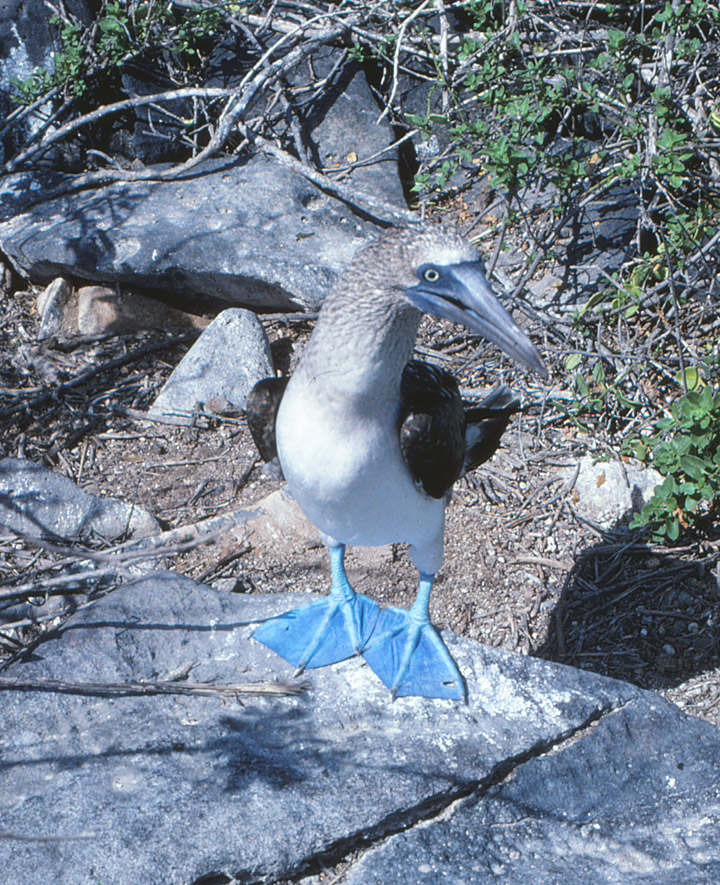
Blue-footed Booby
The Blue-footed Booby (Sula nebouxii) is a bird in the Sulidae family which comprises ten species of long-winged seabirds. The blue-footed booby is medium to large in size. It is on average 81 cm long and weighs 1.5 kg (3 lb), with the females slightly larger than the males. It has long pointed wings and a wedge shaped tail. They have strong thick necks. The boobies eyes are placed on either side of their bill and oriented towards the front. They have excellent binocular vision. The blue-footed boobies eyes are yellow. The male has more yellow on its iris than does the female. The blue-footed booby has permanently closed nostrils specialized for diving. They breath through the corners of their mouths. Their feet range from a pale turquoise to a deep aquamarine. Males and younger birds have lighter feet than females do.
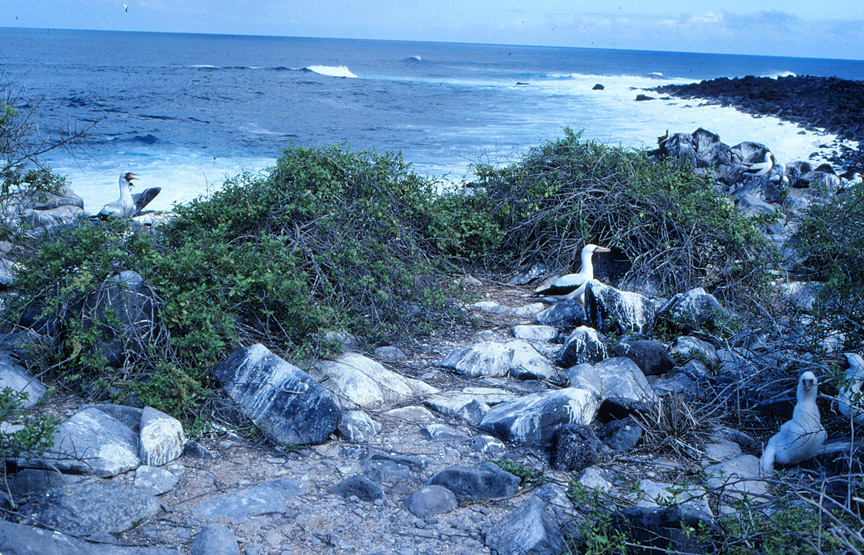
The name “booby” comes from the Spanish term bobo, which means "stupid fellow".
This is because the Blue-footed Booby is clumsy on the land, and like other
seabirds can be very tame. It has been known to land on boats, where it was once
captured and eaten.
The natural breeding habitat of the
Blue-footed Booby is tropical and subtropical islands off the Pacific coast of
South America from Peru to Mexico including, most famously, the Galápagos
Islands.
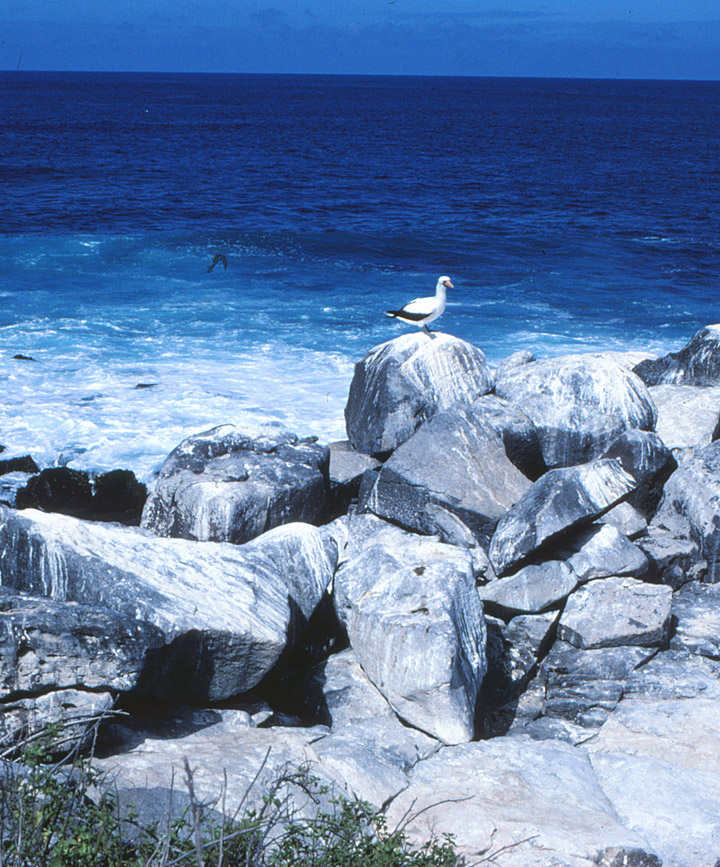

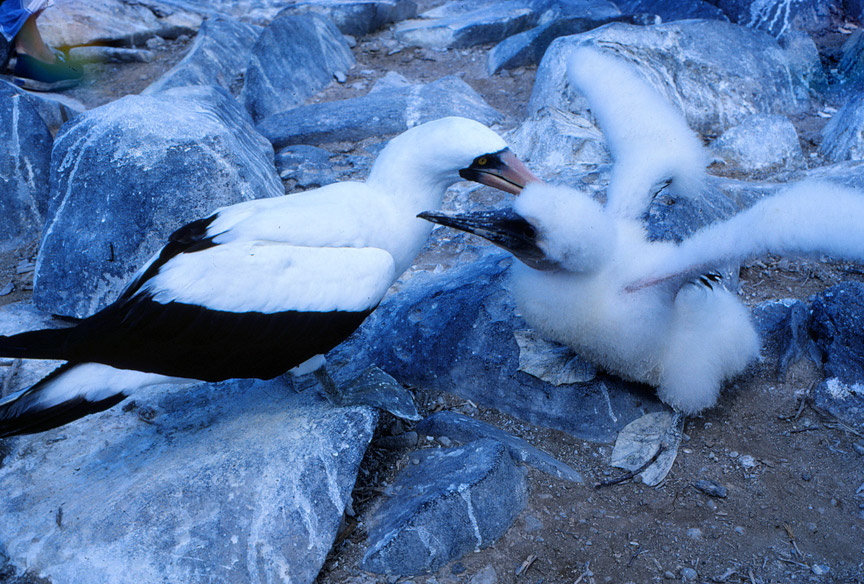

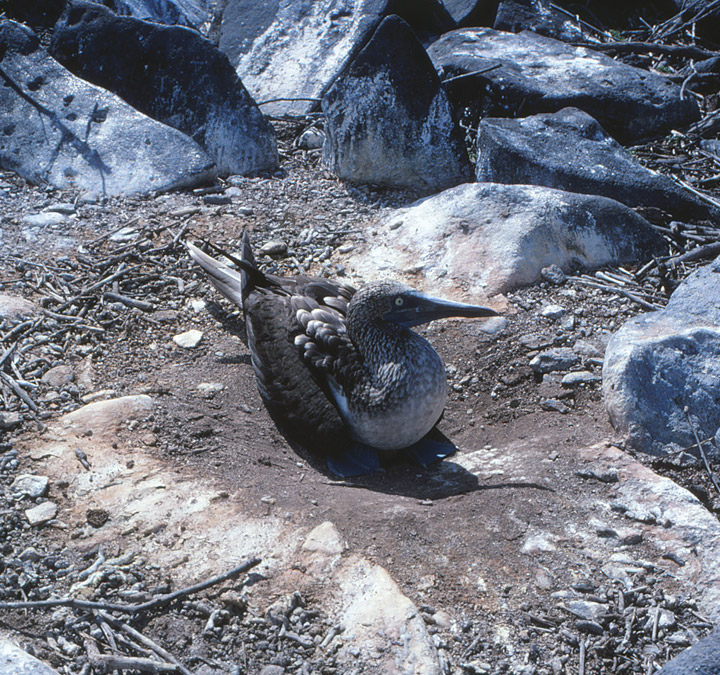
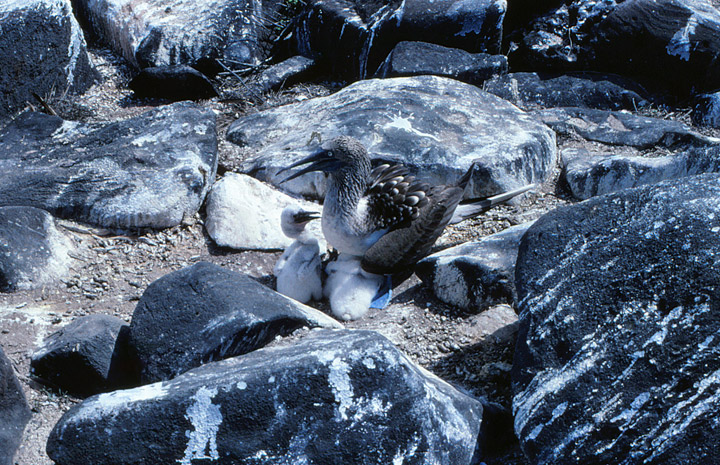
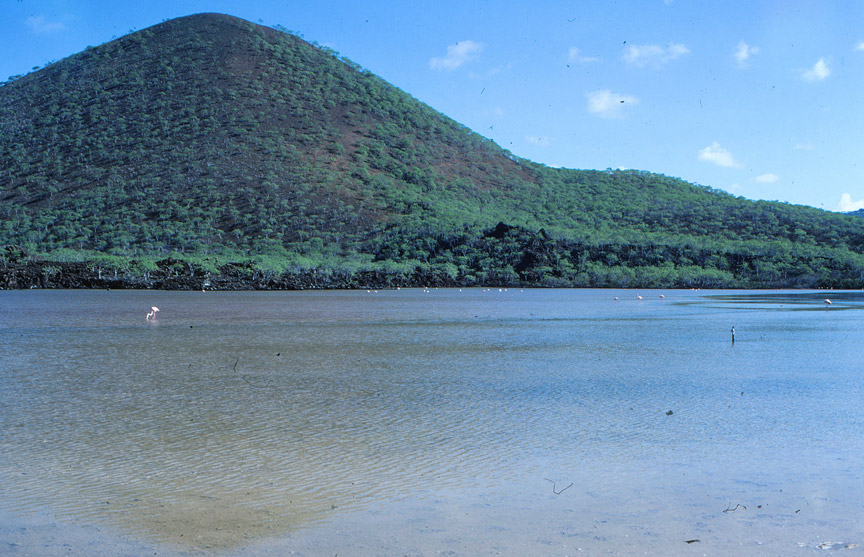
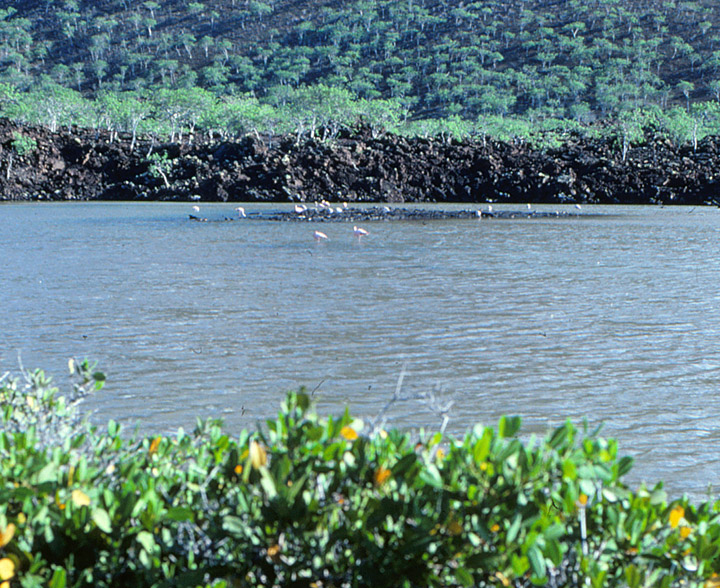
flamingos
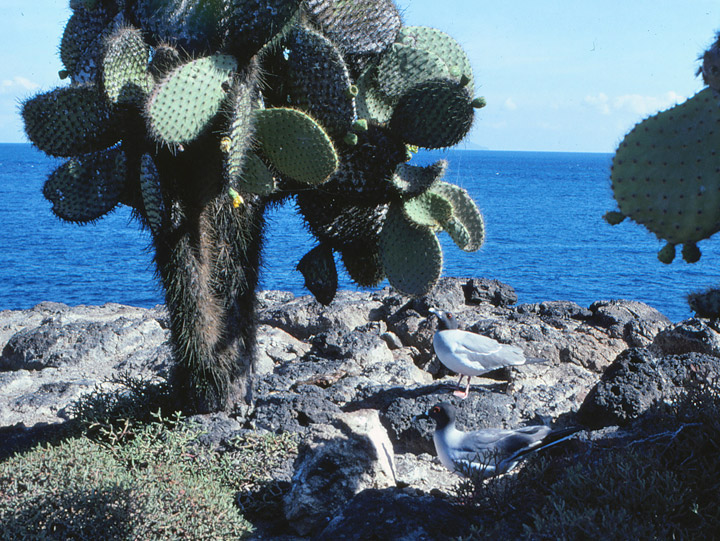

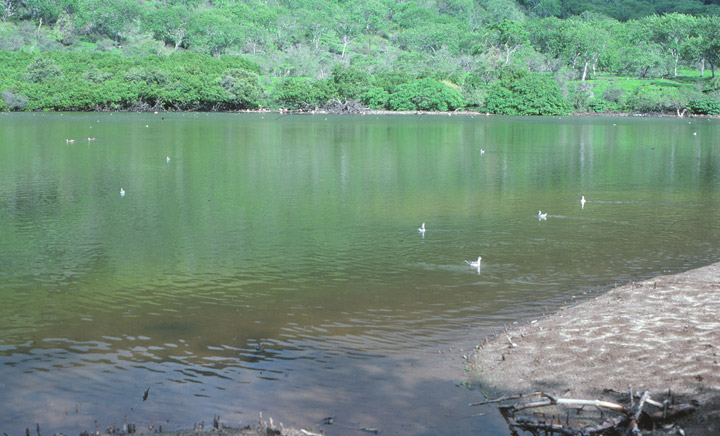
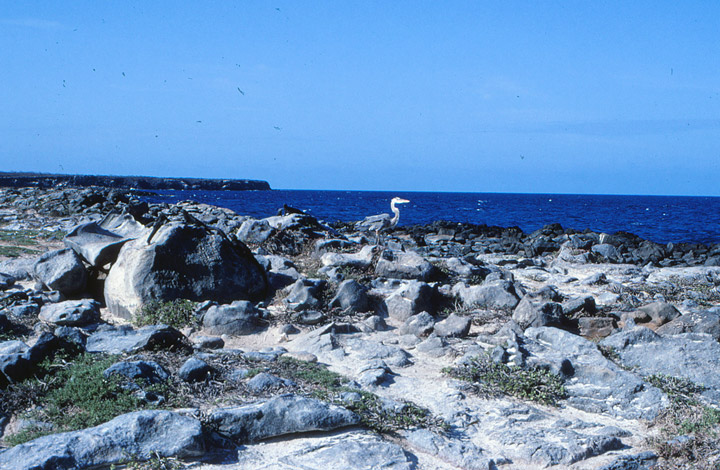
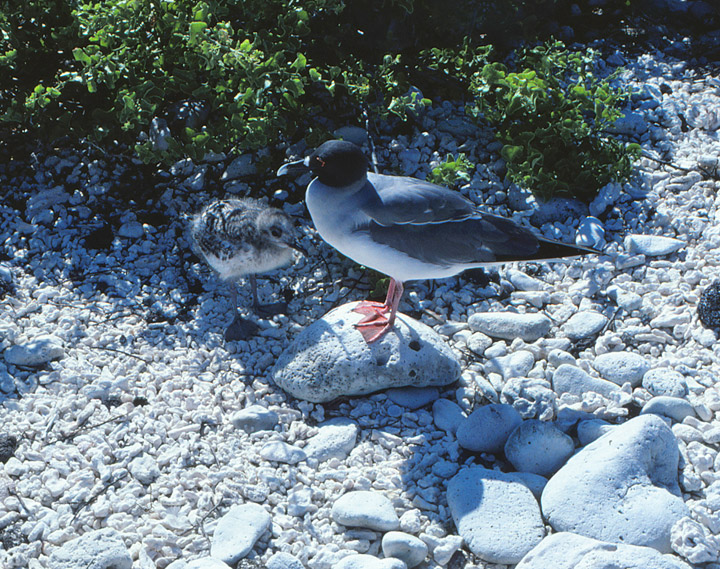

red footed
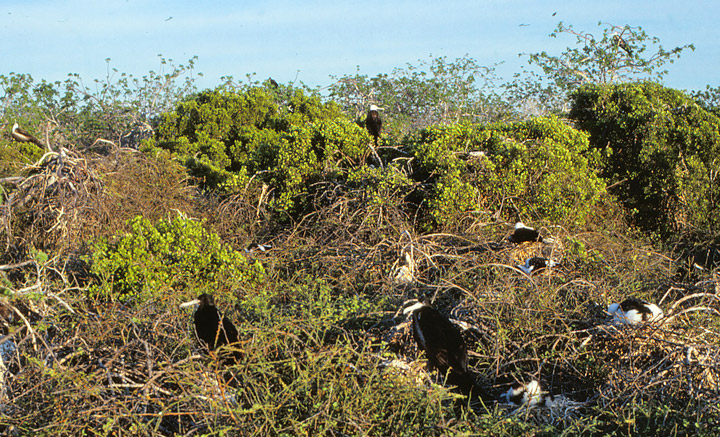
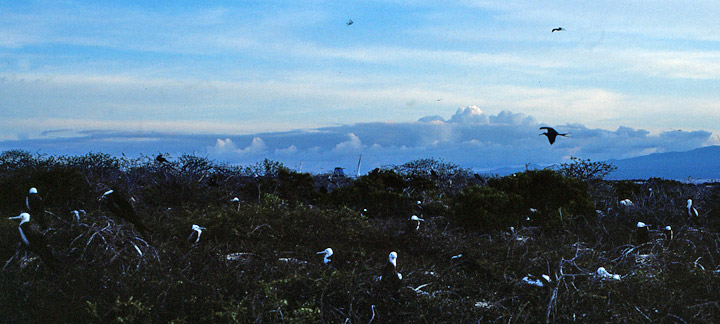
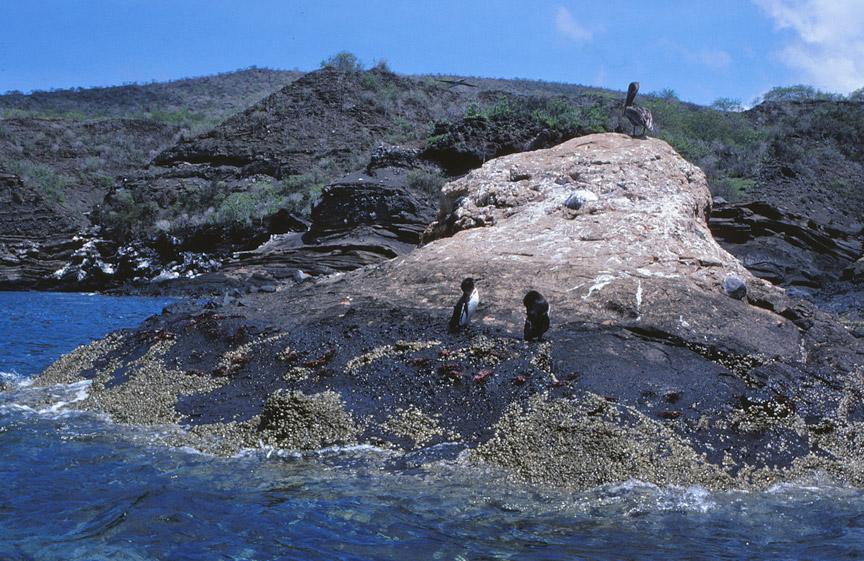

cormorants
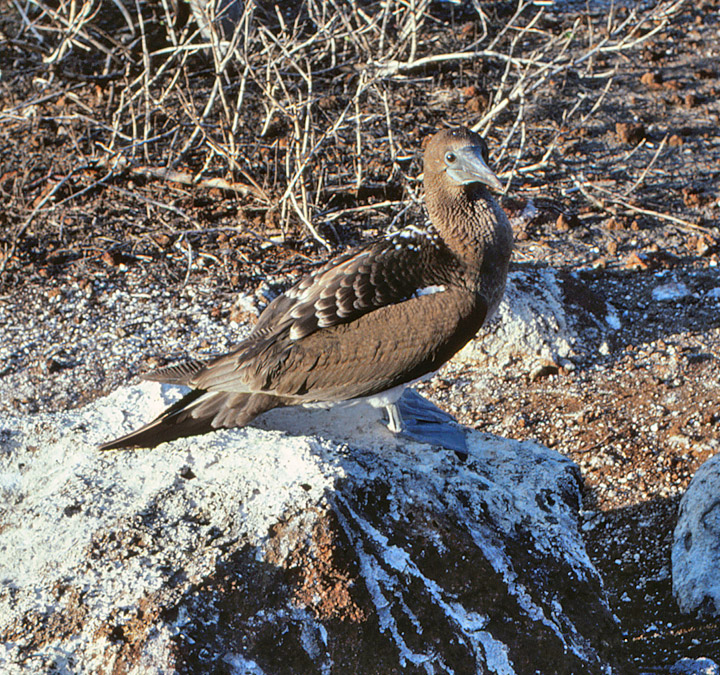
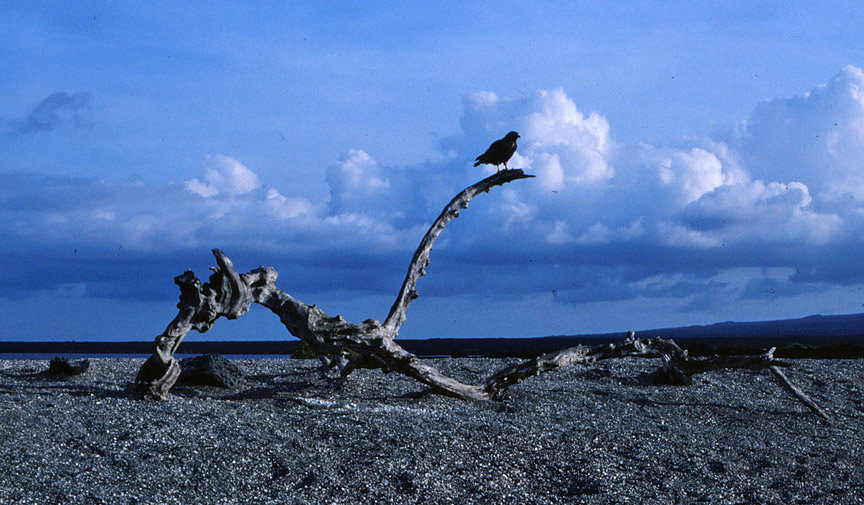
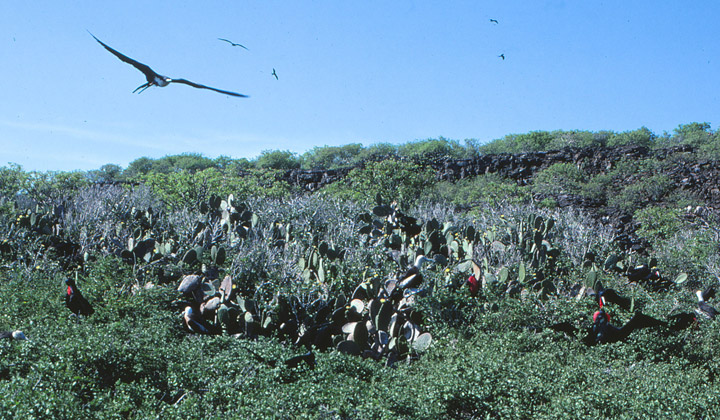
Great Frigatebird
The Great Frigatebird (Fregata minor) is a large dispersive seabird in the frigatebird family. Major nesting populations are found in the Pacific (including Galapagos Islands) and Indian Oceans, as well as a population in the South Atlantic. It feeds on fish taken in flight from the ocean's surface (mostly flyingfish), and indulges in kleptoparasitism less frequently than other frigatebirds. They feed in pelagic waters within 80 km of their breeding colony or roosting areas. In Hawaii this species is also known as the Iwa.
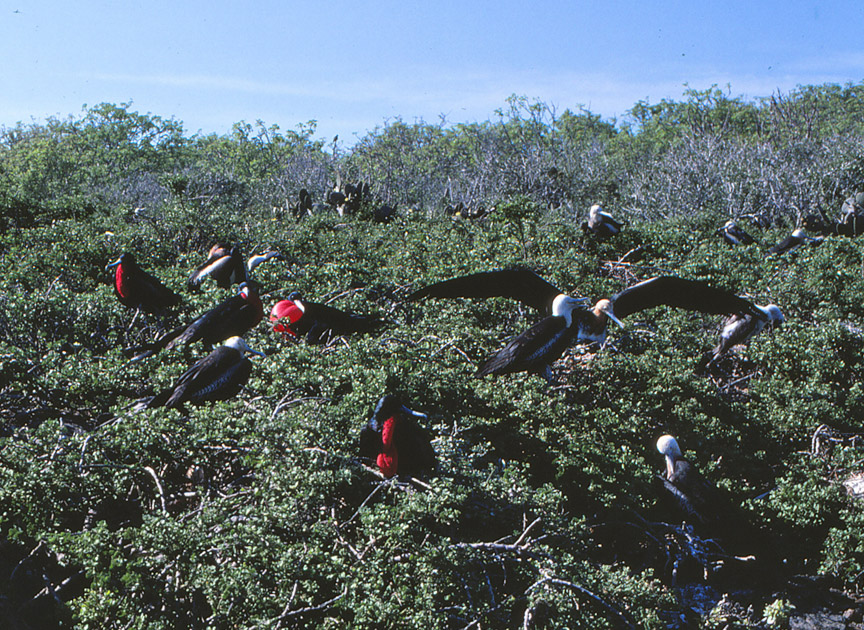
Great Frigatebirds are large seabirds (85-105 cm or 33.5-41.5") with long pointed wings (205-230 cm or 80.5-90.5") and long forked tails. Frigatebirds are light, weighing between 1-1.8 kg (2.2-4 lbs), and have the highest ratio of wing area to body mass, and the lowest wing loading of any bird. Male Great Frigatebirds are smaller than females, but the extent of the variation varies geographically. The plumage of males is black with scapular feathers that have a purple-green iridescence when they refract sunlight. Females are black with a white throat and breast and have a red eye ring. Juveniles are black with a rust-tinged white face, head and throat.
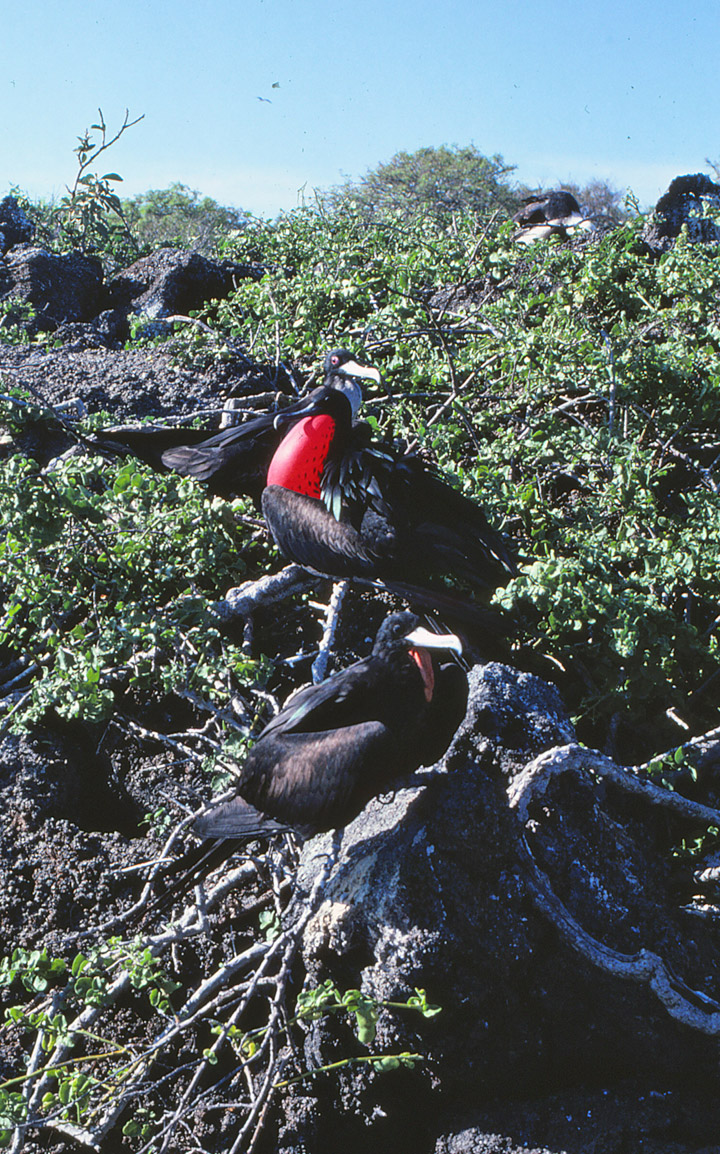
Both sexes have a patch of red skin at the throat that is the gular sac; in male Great Frigatebirds this is inflated in order to attract a mate. Groups of males sit in bushes and trees and force air into the sac, causing it to inflate over a period of 20 minutes into a startling red balloon. As females fly overhead the males waggle their heads from side to side, shake their wings and call. Females will observe many groups of males before forming a pair bond. Having formed a bond the pair will sometimes select the display site, or may seek another site, to form a nesting site; once a nesting site has been established both sexes will defend their territory (the area surrounding the nest that can be reached from the nest) from other frigatebirds.
Text from Wikipedia
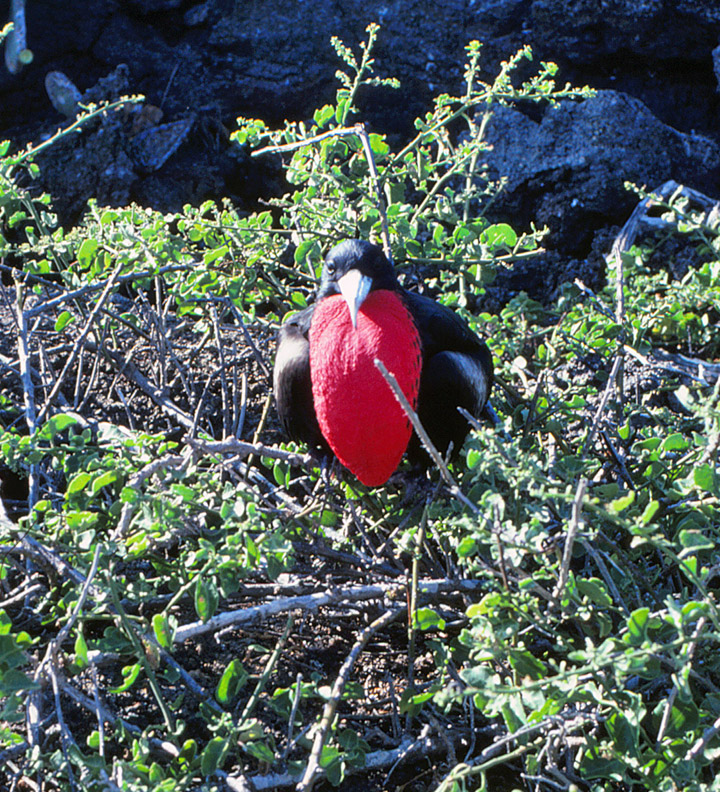
Great Frigatebird
gular sac in male is inflated in order to attract a mate
Return to Galapagos Island page